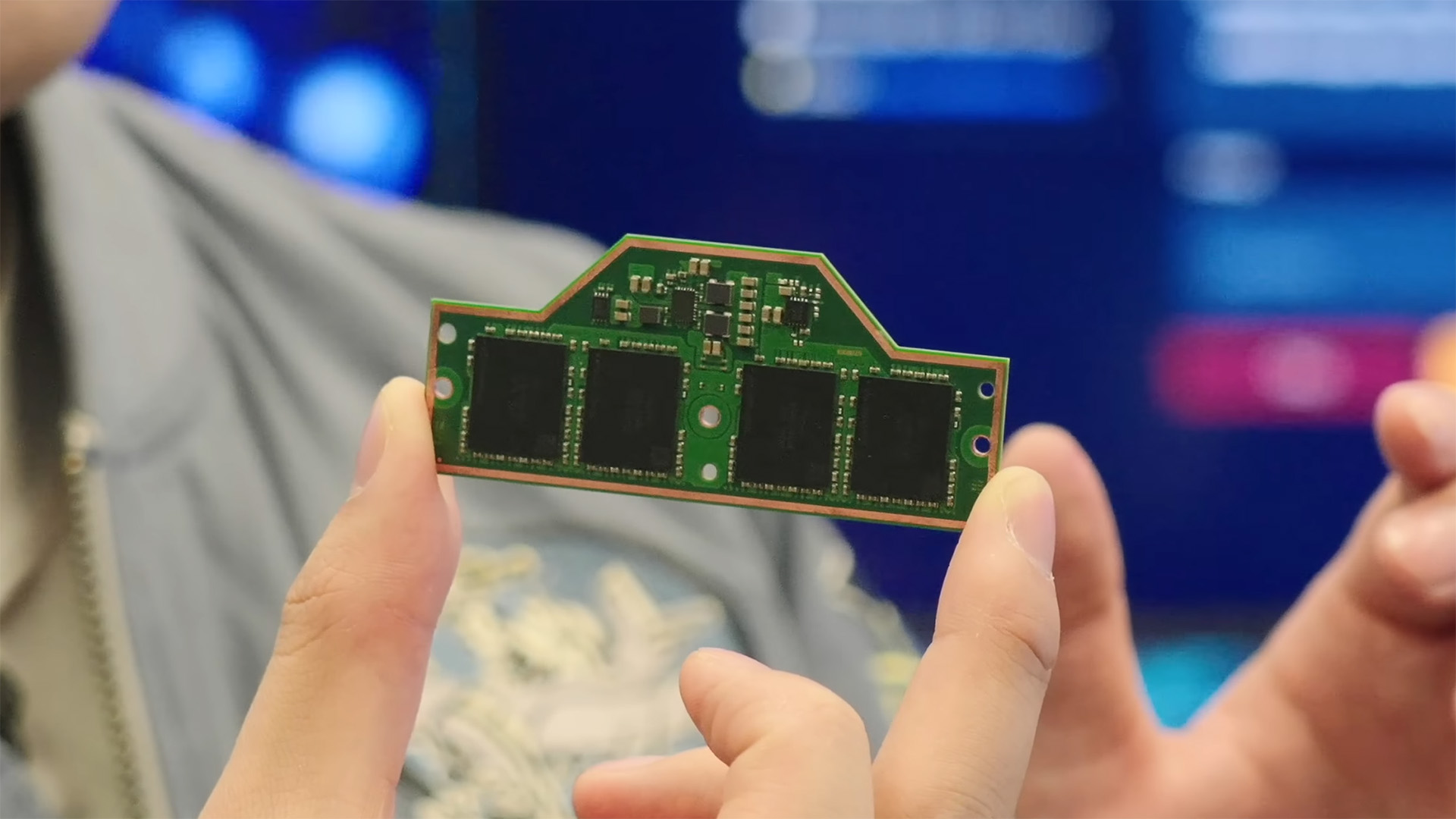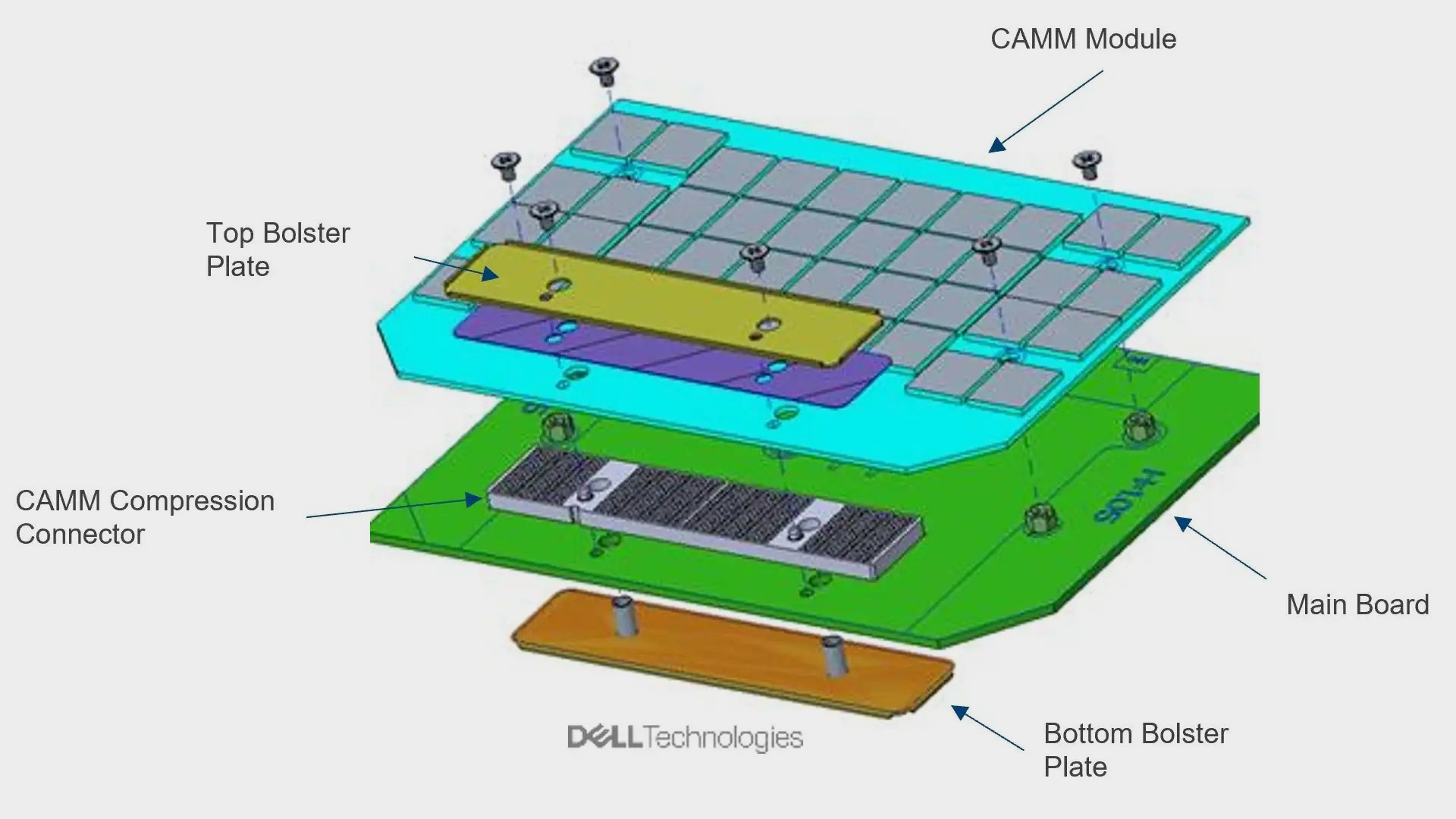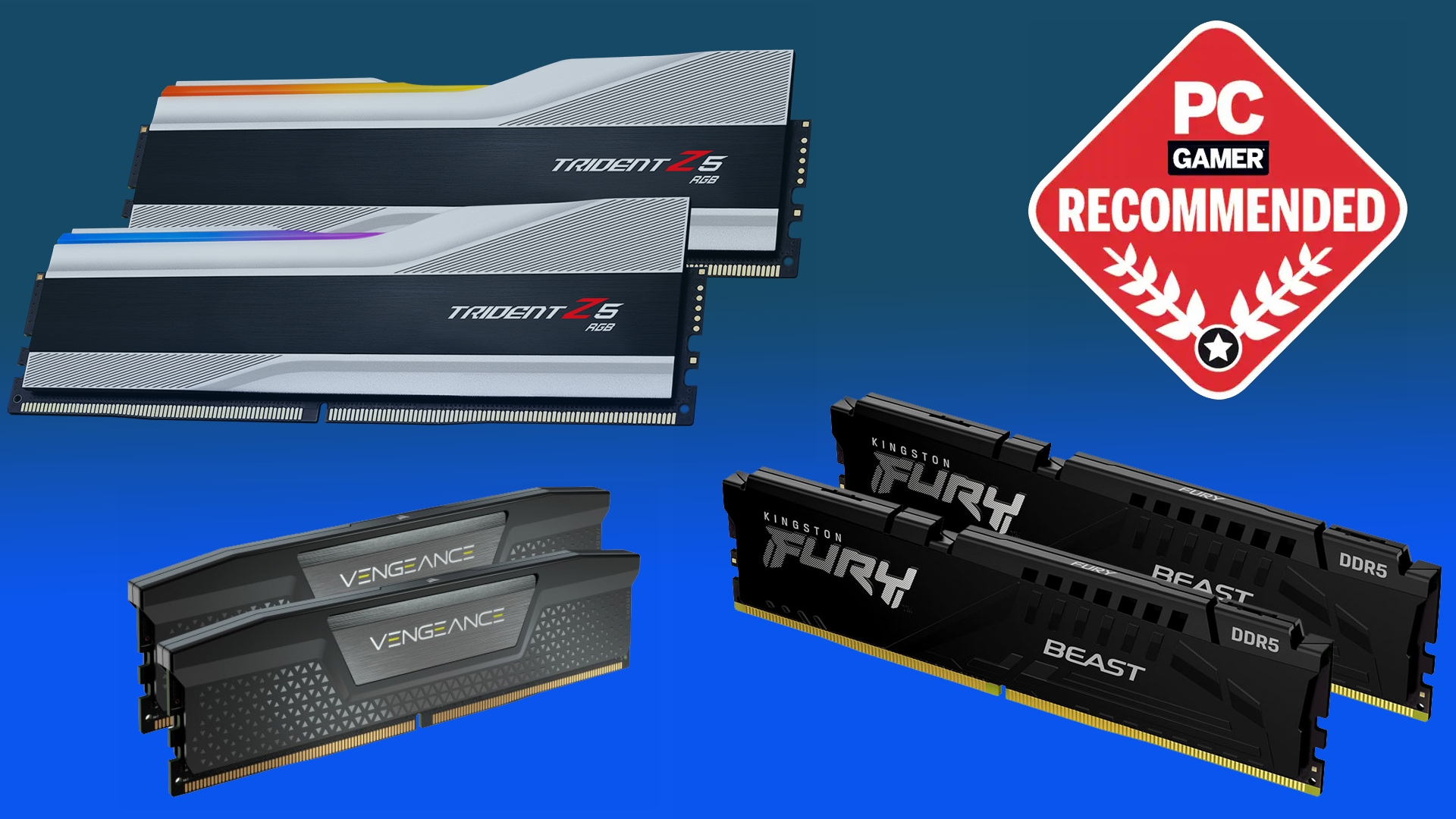Low-profile memory module headed to laptops might be destined for desktops too
The CAMM2 memory module standard would effectively replace 'sticks' of RAM in laptops. Maybe some desktops, too.

Last year saw the emergence of a new memory module standard called CAMM2, a flat alternative to the SO-DIMM sticks used widely in laptops today. The benefits of CAMM are clear: they're thinner than SO-DIMM but just as replaceable. That means we should start seeing the memory module emerge in laptops at some point in the next few years. Yet more surprisingly it sounds like CAMM could also be headed to desktops, too.
Over at CES, Korean outlet ITSub spoke to SK Hynix, one of the world's largest memory manufacturers, about the new CAMM2 standard. They were told that CAMM2 will both be adopted in laptops and on desktop, as spotted by harukaze5719 on X (via WCCFTech).
There's room for interpretation there. Even a compact NUC-like design with LPCAMM inside it could be considered a desktop PC. However, it does appear that JEDEC also is targeting desktops with the new standard.
"DDR5 and LPDDR5/5X CAMM2s cater to distinct use cases. DDR5 CAMM2s are intended for performance notebooks and mainstream desktops, while LPDDR5/5X CAMM2s target a broader range of notebooks and certain server market segments," JEDEC says in a press release.
Crucially, CAMM2 supports DDR5. Thinner laptops tend to use LPDDR5 memory, while the latest desktop gaming PCs and gaming laptops tend to use DDR5. CAMM supports both. The two memory options will, however, come with different pinouts and mounting designs to prevent "the mounting of a module where it should not go," says JEDEC.
Think of CAMM modules like pancaked RAM sticks. All the memory is located on a single, flat PCB. The benefit being you can swap out chunkier SO-DIMMs used on a laptop's motherboard, of which you should really have two or more, and use one of these flat memory modules instead, lowering the thickness (Z-height).

The other benefit of CAMM is that it remains a removable format. It connects via a connection on the rear of the board to a compatible socket. That's a big deal as today the best way to lower Z-height for, say, a thin-and-light laptop is to solder the memory chips directly onto a motherboard. Unless you're particularly handy with a soldering iron, you can't really replace them, and I wouldn't suggest most try.
Keep up to date with the most important stories and the best deals, as picked by the PC Gamer team.
The benefits of laptop CAMM are clear, but could there be a benefit to a wider rollout on desktop?

Best DDR5 RAM: the latest and greatest
Best DDR4 RAM: affordable and fast
JEDEC expects it's possible for greater modularity with stackable modules through CAMM2, which should also help boost capacities. Realistically, up to four DIMM sticks on desktop provide plenty of opportunity for speed and capacity today, but when it comes to dual-stick Mini-ITX boards, perhaps CAMM could come in handy.
It would be Mini-ITX boards that made the most sense for CAMM. They're tight on space, often end up stacking components on top of one another.
You could also more easily cool memory on a horizontal CAMM module than traditional vertical DIMMs.
Yet memory DIMMs are affordable, they've been around for a very long time, and they're pretty reliable. I wonder if there's a need to move away from them for most PC users. With RAM so absurdly cheap today, I'm wary of anything ramping up prices. But let's see how this one plays out—we'll almost certainly get a taste for CAMM in laptops before anything comes to desktop.

Jacob earned his first byline writing for his own tech blog. From there, he graduated to professionally breaking things as hardware writer at PCGamesN, and would go on to run the team as hardware editor. He joined PC Gamer's top staff as senior hardware editor before becoming managing editor of the hardware team, and you'll now find him reporting on the latest developments in the technology and gaming industries and testing the newest PC components.

